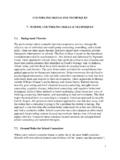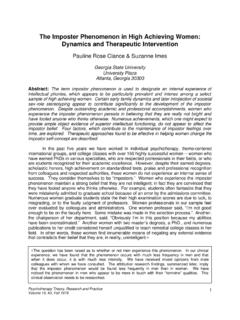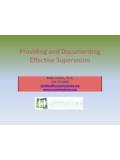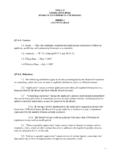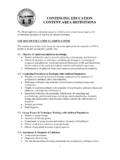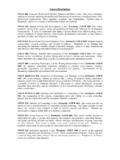Transcription of Understanding Group Dynamics andSystems
1 UnderstandingGroupDynamicsand SystemsWhat is goingon?Meghan hasbeenso openan d responsiveinth e past butnowsheseemsshut tsaid a word sayso methingto herorwould thatjustpushherde ep er into with-dr awal?Waita minut e. I is staring at her, keMeghan squietnessis reflectingsome hesita nc e onth e partof others,almostasif sh e is s pe aking forthem. If so,I d bebetterof f not focusing onMeghanbutin steadencouragingothers to dr th is chapter,you learnto thinkin newwaysab out humanbehavior,attend-ingnotonlyto theindividua l butalsoto thelargersystemicandinteracti vedy namics groupsreq uiresa whole di fferentsetofpe rceptualfi lte rs by whichto makesenseof whatis go on e person,youmust be aware of multiple people, var io us interactions,an d all theprocesseventshappeningin- between, ju st as illustratedin th e ref lec -ti on s of thegroupleader is enough to makeyour head all youdi d as a groupleaderwasco nstantlyfo llowth e ma in speaker orinteraction , Group sessionswouldbe ra thertir in g, an d potential ly seyetis tha t youwould al so be missingout on al l thepo tentialco ll ectiveenergyan d interacti onsthatgr oupworkca n e manyof yourindividualtherapeuticski lls.
2 Theyar e appliedquite is fo r this573reasonthatex periencedgroupleadersleavelinearthinking behindandlearntothinkrecursively(circul ar)andsy st meansle arning to lookat thebiggerpictureof howeachperson sactions fit wi thina la rgerco ntextof hisorher wo rld, as well as thatof thegro up . Youwillnotonlydiagnoseindividual dif -ficu ltie s bu t alsoassessin terpersonal patterns,groupstages,systemicfunction-in g,coaliti onalalli ances,andot herdynamicsthatareimportant to a sense,eff ect ivegroupleaderslearnto themodelsandtheoriesaboutgrouparefocused oninterper sonalinteractionandaredrawnfrominterpers onaltheory,social psycholo gy,andresearch interpersonalfocusis useful sinceit dra wsatte ntionnotonlyto exchangesandbehaviorin the presentbu t alsofromthepast . Thefoc us on systemsall owsgrouplea dersto expand theirvisionof a groupandseehowit evolvesoverti , it bringsattentionto thecom-municationpatternsandint erpersonal pa tt ernsthatemerge.
3 Essentially,it deep-ens theunderstandingof gr oupdynamicsan d remindsgroup leadersthatgroupwork is notindividualco un seli ng in a Group setting,but rathergroupcounsel-ing in a systemicsetting(Connors& Caple, 2005).Lin ear and CircularCausalityThe strange thingab outleadinggroupsis thatyouareattendingnot onl y togroup members as individualsbutalsoto theinteractiveeffects of howeachper -son s behavior influences,andis in tur n affectedby, everyoneelse s yourownclassroomas one example. Theins tr uctor doesandsaysthings thathavea hugeimpacton whathappen s in theroom. It wouldappear as if youandyour cl assmates reactin a linearwayto the stimulus of a sta tement su ch as Okay,cou nt offbyfi vesandorganizeyourselves intosmallgr ou ps. So mestudentslook an noyed,andothers ger ly agree,excitedthattheydonot haveto sit qu ietlyfortheperiodandheara lecture. Youmightfeelbothapprehensiveandintereste daboutwh at is aboutto one model , favoredby traditional behav ioraltheoristsovertheyears,humanreactio ns occureither as a stimulus-response,classicalcondition ing( la Iv an Pavlov)processor as a response-stimulus,operant( la B.)
4 F. Skinner) theformer,th e inst ructor sdi rec tions el icitan au tomaticre sponseinclassmembers thathasbeencondit ionedovertime;in thelattercase, a particu-lar response theinst ructor sobservationth at th e en ergylevelis lowin theroo m is conditionedbya stimulusdesignedto altercurrentco h ex amples,behavioris viewedas linear in nature: Oneactionaff ectstheothe r in a direct : FOUNDATIONSOF GR OUPWORKEven contemporarybehavioristsnowseethisas a grosssimplificationof wha tha ppe ns duringco mplexhumaninteractions(Spiegler & Guevremont,2003).Th erear e notonlyinternal,cognitive,an d affectiveprocessesgoingon wit hineachpersonthatinfluencehowtheworldis perceived, butbehavior in groupsfol lows a much more circular rather thana circularcausal ity,groupmembers be havioris simultaneouslymovingin all directionsat once, acontinuousseriesofcircular loo psorrecurringchainsofinfluence (Goldenber g & Gold enberg,2007,p.
5 16). In a sen se , thi s sp eaksto di fferentfo rcesmovingin multipledirections not influencedby one actionbutratherby ongoingmutuallyinfluencingpro cesses. Buildingon theexample above,th einstructor askingthecl assto br eakintosmall gr ou ps is rea lly justone of manypr ocesses happeni ng at in tryingto makesenseof whatis goi ng onin a classroomor whatstarteda fightamonga groupof people,it is vi rtually impossibleto identifywhocausedwh at. Allgroupbehavior occurswithina contextthatincludes theindivi dual s perceptionof reality, as we ll as theinteractionstakingplace,bothco nsciouslyandunconsciously, betweenall ClassActivityIn groupsof three, identifyone cr itical incidentor dramat ic mom ent that recentlyoccurredin cl ass in which many peoplewere af fect ed by what trans pir ed. Go backand try to re-createwhat might have led up to the cul minatingevent as well as it s af ter -math.
6 Rather than relyingonlinearcaus ality,empl oy a model ofcircular caus ality(rec -iproc al influences,causes , and effects)in which you exami ne how each person sbehavior was both a trigger and an effect on other s acti one example,linear cau sality might lead on e to say that a studentasked a dum b que stion at the end of class, elicitinggroa ns fr om class mates, frustrationin the instruc -tor, and then sham e and regre t in that stud ent for ope ning his mou th. If you look at thatsame in ci dent from a circ ular perspe ctive, you id entify tha t many more complexproc esses were occu rring. The stud ent asked the questionin the fir st plac e becaus e heread a lo ok in the instructor s eye that see med to invite such an instructorwas actuallytrying to encour ag e more stude nt par tic ipationbeca use he interpretedthatthi s part icu lar st ude nt wa s bore d when he was rea lly confu se d, and so the studentchecke d out for a while.
7 The groan s fro m the class may have to do with some studentswantin g to lea ve early, an other being annoyedby the que stion, and ye t an oth er who isnot eve n paying attentionin cla ss but is rath er look in g at his iPho ne an d just saw that hisfavori te team lost. Once you bring in the co ntribu tory influen ces and effec ts of others inthe room, you have quite a comp lex situation,fa r mo re so tha n yo u ever : UnderstandingGroupDynamics andSys tems59 ForPersonalApplicationThin k of a time in your family wh en someo ne cr eated a probl em or co nfl ict to hel p everyoneelse res ume a fam ili ar, stable pat tern . For instance,your paren ts were havinga disagreement and you or yo ur si blings distractedthem by act ing out. Con sid er theways that your fam ily of origi n or gani zed it self consi stentl y into the same, famil iarorder ed becamedes tabi li zed or ch aoti c, what rol es di d youand others pl ay to bring things back to equil ibrium?
8 Sys tem sTheoryThe co nceptof circularcausality is onlyoneof manyid eassp awnedfro m whathas becomeknownas systemstheory. De velopedbybiologistLudwigvonBertalanffy(1 968),thi s approachto understandingbehaviorwasdesignedtomakese nseof thewa y tha t all li vi ng creaturesorganize themselvesandact in pr e-dict ,he wasinstrumental in gettingothers to considerthe whole as greater thanthesumof its pa rts,wh ichis cal og ist,andalsofondof phy si cs metaphors,ma ny of theterms he introducedto describethewaygr oupsof peoplebehavesoundmor e ap propriatefor a sci -enceclass:homeostasis,morphogenesis,and fee til groupleadershada frameworkin whichto lo ok at sys temicbe havior,thatis, theinteractivepatternsan d subsystemsof a Group ,therewasa ten dencyto treatgr oupworklikedoingindividualcounselingor therapy,butwithanaudience ,jus t as thereare so megr oupleaderswhoarees sentiall y doingindividualther-apyin a groupse , thisdoesnot capitalizeonmanyof thepowerfulthe ra peuticin gredientsthatarepresentin a co thehelpingprofessions, thefamilytherapymovement (f igu ressu chasMurrayBowen,JayHa le y, VirginiaSatir,to mentiona few)hasbeeninstrumen-tal in introducingsystemicth inking as a means by whichto asse ss thewaysthatgroupsof relativesorganizethemselvesovertime,crea tingsta blepatterns(homeostasis) thatareinclined to re turnto familiarstates(e qu ilibrium).
9 In thissen se, oneof thebeliefsis that systemsten d to be self-correctingbasedon feed-back,eitherpositiveor negative,andth at : FOUNDATIONSOF GR OUPWORKM ostfa milytherapists,wh o arealsogroup specialists,fav or a wholeglossaryof ter msthatareusedto descri be th e wayfamilysystemstendto operate. Manyof theseideasarequiteusefulin un derstandingbehaviorin all groups,notjustfa an ex ampleof th is, imaginethata Group memberclaimstha tan oth er participanthur t himdeeplyby co nf ro endsherselfby sayingthattheram -ble r drives hercrazywi th his tendencyto tal k all th e time. Eachbelieves thattheother is causi ngthemto act thewaytheydid(e. g., A B, or B A),eventh ougheachis actuallyboththecauseandtheeff ec t of th e other s behavior( ,A B).Wesimplifiedthisinteractionconsiderab ly,of co ur se . Re me mberthatth ey are bothpartof a largergr oupin whichthere are alsoother memberscovertly involvedin thisinteraction,rooting forone per so n or the otherdepend-ingon theirloy alt ,or su bsystems,are al so importantphenomena to observean d ide ts, ea ch withits ow nsetof rulesor normsthatregulatebehavior(r ememberthat homeostasisis thekeyin th is model).
10 Eachof thesesmallercoalitionalgroupshascer ta in bound -ariesbetween themthatcontrolwhocansaywhat to a fa mily, thisphenomenonmight be readily observedas a father-mothersubsystem;anotherbet ween twoof thethreesi blings;andanother co mposedof themother, hermother,an d thethirdchild. In a Group ,you mi ghtseethiswhen thereis apopular andpowerfulgroup acouplememberswhohavebecomecl oseco mparedwiththosewhoareshyandnottooconfi preciatethatthesecoalitionsar e or ganizedaroundmutualneeds,loyalties,an d controlof unctionalanddestructive,su ch as whena parentis alignedwitha ch ild againsthisspouseor a childis incoaliti onwitha grandpar ent againsther par ents,the counselor s jobis to initi-aterea lignmentsin the st ructureandpower,cr eatinga newsetof subsystemsth at aremore groups,as well,yo u willobservethatmembers willalignthe mselves wi thall ies acc ordingto sharedvaluesandwhat is in entgroupmembers findwaysto sticktogether.










